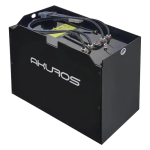The Conversation That Started a Transformation
“Why do we keep using the same warehouse layout for every client?” asked a project manager during a logistics review in Munich.
“Because it works—mostly,” replied the operations director.
“Mostly isn’t good enough anymore,” she countered. “Automotive parts, frozen food, pharmaceuticals—they all move differently. We need a custom warehouse solution for each.”
That conversation reflects a growing truth across Europe and beyond: warehouses can no longer be one-size-fits-all. The shift toward customized warehouse solutions is driven by rapid automation, stricter safety standards, and sector-specific storage demands.
This article explores how companies like Akuros are redefining flexibility—turning warehouses into adaptive systems that align perfectly with each industry’s workflow, material behavior, and sustainability goals.

Warehouse Solutions
Why Customization Is the New Standard
According to the European Logistics Performance Index 2025, companies that customized their warehouse layouts and workflows to match product categories achieved 28% faster throughput and 22% lower maintenance costs.
Customization in a warehouse solution doesn’t simply mean rearranging shelves; it involves engineering for climate, density, and workflow. From temperature-controlled pharmaceutical storage to vibration-free electronics handling, design precision drives profitability.
Different industries benefit from tailored strategies—each requiring its own structure, material, and automation logic.
To understand which sectors lead this transition, see Top Industries That Benefit Most from One-Stop Warehouse Services for industry-specific insights.
Structural Flexibility: Building the Framework That Fits
Every industry has its own “spatial DNA.” For food processing, it’s about airflow and hygiene. For manufacturing, it’s load bearing and equipment zoning. For e-commerce, it’s movement speed and access points.
The best warehouse solutions balance three engineering principles:
-
Structural Modularity – Adjustable racking, modular bays, and adaptable mezzanine systems allow warehouse layouts to evolve with changing SKU profiles.
-
Environmental Control – Integrated insulation, humidity control, and airflow systems maintain product quality across regions and seasons.
-
Automation Readiness – Compatibility with AMRs (Autonomous Mobile Robots) and AGVs (Automated Guided Vehicles) ensures scalability and smooth technology upgrades.
These design considerations form the backbone of the Warehouse Solution approach by Akuros—integrating efficiency, safety, and sustainability into every stage of the supply chain.
From Strategy to Execution: Turning Warehouse Planning into Action
Designing a strong warehouse solution isn’t just about shelves and scanners — it’s about building a synchronized ecosystem where people, processes, and data flow seamlessly. Once strategic planning covers SKU segmentation, packaging design, and supplier coordination, the real challenge begins: translating these plans into operational efficiency.
At this stage, implementation becomes the bridge between strategy and scalability. Teams must align inventory systems with automation, balance 3PL partnerships with in-house fulfillment, and establish measurable KPIs for quality, timing, and throughput.
Companies adopting integrated systems — like those engineered by Akuros — are proving that a well-executed plan is more than logistics; it’s an engine for long-term reliability, reduced waste, and faster growth across regional markets.
The Power and Mobility Connection
No warehouse runs without movement—and every movement consumes energy.
In high-turnover industries such as automotive assembly or cold chain distribution, forklift battery technology plays a critical role in maintaining uptime.
A 2024 study by ESTA Logistics Forum found that lithium-ion battery integration reduces downtime by 35%, increases energy efficiency by 42%, and cuts replacement frequency nearly in half.
This efficiency aligns perfectly with Akuros’ vision for one-stop integration, combining infrastructure with energy optimization.
Learn more about advanced power solutions for modern warehouses at Forklift Battery Systems.
Ground-Level Precision: Optimizing Material Flow
Customizing a warehouse isn’t just about what’s above ground—it’s about how materials move across it.
The pallet truck remains the unsung hero of warehouse logistics, connecting production lines to racking systems and docks.
In flexible layouts, pallet truck design affects more than convenience—it determines flow speed, safety, and operator fatigue.
According to EuroStat Logistics 2025, ergonomically optimized pallet operations can improve manual handling productivity by 19%, while reducing workplace injury by 27%.
Read a full breakdown of operational best practices in Everything You Need to Know About Pallet Trucks, which details how motion optimization complements warehouse structure.
Case Study: Precision for the Pharmaceutical Sector
In 2024, Akuros collaborated with a global pharmaceutical distributor in Denmark facing temperature instability in its legacy warehouse. Standard racking and cooling systems failed to maintain consistent storage conditions, resulting in high rejection rates for sensitive materials.
Challenge:
-
Temperature fluctuations between storage zones
-
Poor space utilization (only 60% efficiency)
-
Energy wastage through uncontrolled airflow
Solution:
-
Custom multi-zone warehouse solution with active temperature zoning
-
Integrated power management and automated tracking
-
Insulated materials optimized for thermal efficiency
Result:
-
98.7% stability rate across all product batches
-
35% reduction in energy use
-
24% faster order fulfillment through restructured aisle design
This case demonstrates how customization transforms warehouses from static storage spaces into living, adaptive systems.
Why One-Stop Solutions Win
A fragmented warehouse—built by multiple suppliers—creates technical conflicts, redundant costs, and maintenance headaches.
One-stop warehouse services, pioneered by Akuros, solve this by integrating structure, power, and automation under one design ecosystem.
The result is synergy: fewer vendors, smoother communication, and a unified maintenance protocol.
As the ESTA Logistics Report 2025 notes, “Integration is the ultimate efficiency—one structure, one network, one point of control.”
Learn more about end-to-end design and implementation through Akuros’ One-Stop Warehouse Solutions.
Expert Insights: Data Meets Design
Dr. Henrik Solberg, Logistics Innovation Advisor at the European Warehousing Institute, states:
“The future of warehouse design is adaptability. You don’t just build for today’s products—you build for tomorrow’s disruptions.”
Similarly, data from Global Supply Chain Review 2025 shows that warehouses with customized modular systems achieved 40% faster recovery from pandemic-related disruptions compared to fixed-layout facilities.
Customization, therefore, is no longer a luxury; it’s a strategic shield against volatility.

one-stop warehouse solutions
FAQ
Q1: What is a customized warehouse solution?
A1: It’s a tailor-made storage and logistics design that adapts structure, technology, and workflows to fit the specific needs of different industries.
Q2: Why are one-stop warehouse services better than traditional setups?
A2: They centralize management, reduce vendor complexity, and enable seamless integration between structure, energy, and automation systems.
Q3: Can customized warehouses scale as business grows?
A3: Yes, modular engineering allows future expansion without major reconstruction.
Q4: What industries benefit most from customization?
A4: Pharmaceuticals, e-commerce, cold storage, manufacturing, and automotive industries see the highest ROI from adaptive warehouse systems.
Q5: How long does it take to implement a customized warehouse solution?
A5: Depending on complexity, typical deployment ranges from 3–9 months, including design, construction, and testing.
References
-
European Logistics Association. 2025 Warehouse Automation Trends and Market Adoption Report. Brussels: ELA Publishing, 2025.
-
International Warehouse Logistics Association. Best Practices for Multi-Industry Fulfillment Systems. Chicago: IWLA Insights, 2024.
-
Dr. Elena Kruger. Adapting Warehouse Design for Industry 4.0: Modular Approaches in Modern Logistics. Berlin Institute of Supply Chain Studies, 2025.
-
Logistics Management Journal. The Role of Custom Warehouse Solutions in Global Trade Optimization. Vol. 42, Issue 3, 2024.
-
European Supply Chain Council. Energy Efficiency and Sustainability in Automated Warehouses. Amsterdam: ESCC Press, 2025.
-
Professor Martin Lemoine. Human-Machine Collaboration in Next-Generation Warehouse Operations. Paris: International Journal of Industrial Engineering, 2025.
-
UK Department for Transport & Logistics. Cold Storage and Temperature-Controlled Warehousing in Europe. London: Government Logistics Review, 2024.
-
Akira Watanabe. Warehouse Solution Architecture: The Impact of Data Integration on Efficiency Metrics. Tokyo Logistics Review, 2025.
-
ESTA (European Supply Chain Technology Alliance). Annual Report on Safety Standards in Automated Material Handling. Geneva, 2025.
-
Akuros Research Team. Case Study: Industry-Specific Customization in One-Stop Warehouse Solutions. Internal Publication, 2025.
As global logistics evolve, customization has become the backbone of warehouse innovation. Generic systems can no longer meet the distinct needs of different industries—from pharmaceuticals demanding temperature precision to e-commerce requiring fast turnover and scalable automation.Dr. Eva Lindström, senior researcher at the European Logistics Institute, observes:
“Every warehouse now acts as a data-driven ecosystem. The key to long-term resilience lies in modular adaptability—buildings that think, move, and respond to industry-specific variables.”
Research from the ESTA 2025 Logistics Forum supports this, showing that companies using integrated, customized warehouse solutions report 30–40% higher efficiency and reduced downtime.
Akuros exemplifies this evolution through its one-stop warehouse philosophy—merging structure, mobility, and energy into one intelligent framework.
The takeaway is clear: the future of warehousing isn’t expansion—it’s integration. By customizing systems for each industry’s DNA, companies don’t just store goods; they store potential, ready to move at the speed of global demand.








